The Scatterplot List allows for the plotting of a taxa or species assemblage occurrence records across all pairs of selected environmental layers. This includes any environmental-type layers from prior analysis.
This tool provides a powerful way of identifying layers/variables that appear related in some way to species distributions. The user can then redo these Scatterplots individually to further investigate the relationships between the environments given by the two environmental axes of the Scatterplot, for each occurrence record.
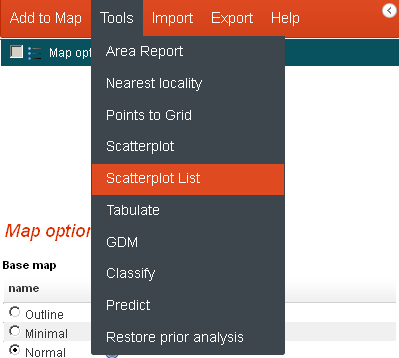
From the menu option, select ‘Tools’, and then ‘Scatterplot List’.
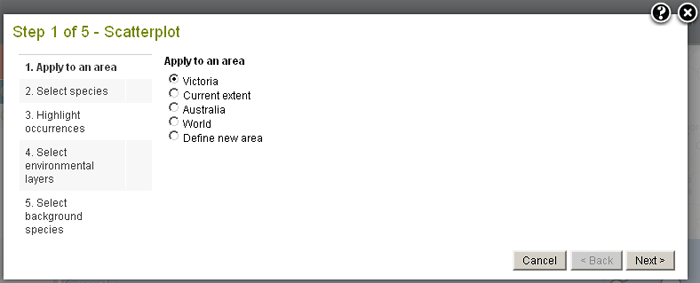
Note the ‘Define new area’ will involve an extra step (please refer to Add Area for additional information). In this example the state of Victoria has been pre-defined and selected from the ‘States including coastal waters’ contextual layer.
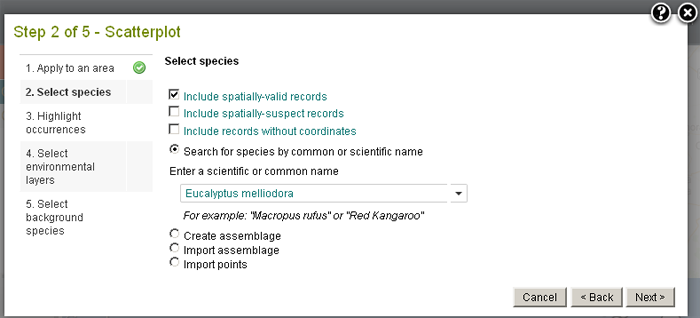
It would usually be wise to use only points for occurrences that are deemed spatially valid, unless this yields far too few records. The more comprehensive and consistent the occurrence records are, the better the results are likely to be.
Species assemblages and the import of species location points are also methods that can be used for the occurrence points on the scatterplots.
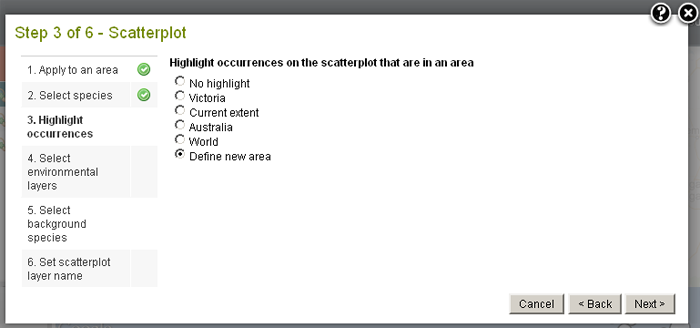
Highlight active area occurrences. Selecting this option will highlight those occurrences on the scatterplot occurring within a map’s defined active area. This option is best for highlighting a sub-region to show where points of a spatially distinct area fall within the ‘environmental space’ defined by the two environmental axes. Refer to Add Area for additional information.
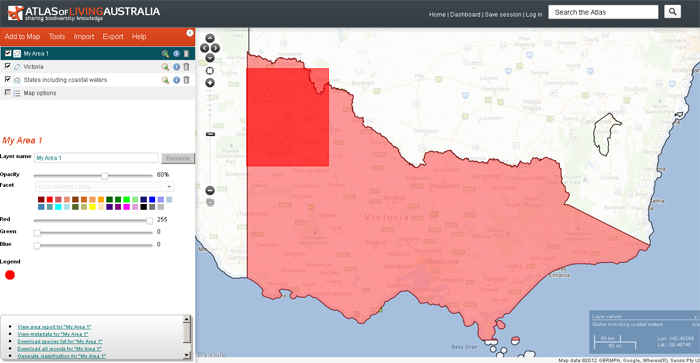
The ‘My Area 1’ is the sub-region that will be highlighted in the list of scatterplot images below ».
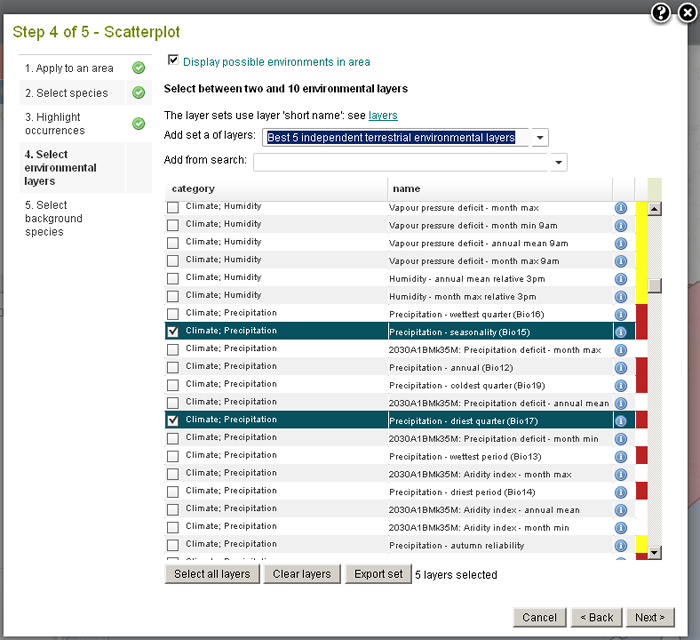
There are many ways to select the environmental layers. You can take a quick look using the best five independent terrestrial layers. You can also use any previous layer selections, search for layers, paste in a set of layer names or select them individually in the list of environmental layers. If you search for layers remember that you can also search on layer keywords, for example ‘marine’ or ’2030′. As mentioned above, test out various combinations of environmental layers and look out for patterns shown in the display of species points on the scatterplots.
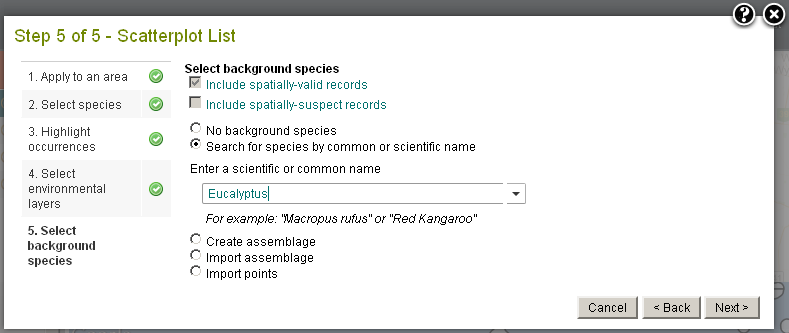
The background taxa group is this case is the genus Eucalyptus. This gives us a good indication of what environments the genus covers and what portion of that environment is covered by E. mellidora. However, choosing a competing species or genus might also be very useful in identifying their (environmental) niche.
List of each of the different combinations of Scatterplot images based on the chosen environmental layers.
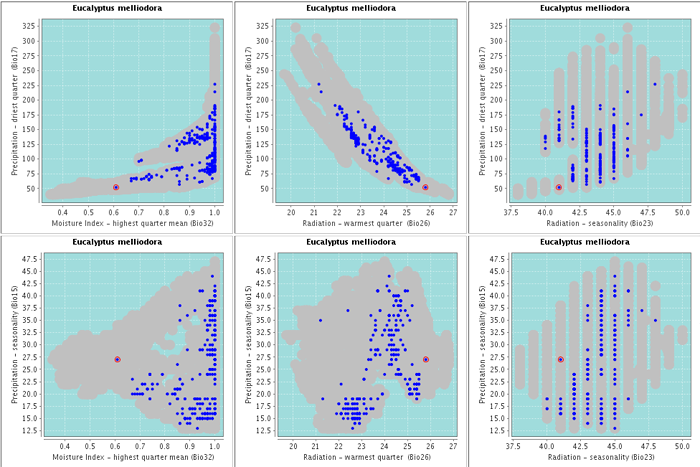
In these scatterplot images immediately above and below, the points ringed in red come from the selected ‘My Area 1‘ of north-western Victoria.

In these scatterplot images the ‘display possible environments in area’ produce a grey-scale background on the scatterplot that delineates the area of that combination of environments that occur within the full range of possible environmental values. Environmental combinations outside the environmental envelope do not occur in nature and are shown in light blue. The grey-scale: Light colours imply a greater area of the environmental combination than darker colours, thus providing an indication of the spatial extents of the associated environments.
Of course, you can display both the ‘possible environments in an area’ and a background species or species assemblage, together in the list of scatterplot images by choosing the appropriate options.